Have you ever noticed birds with a distinctive tuft of hair on their head?
It’s a peculiar feature that sets these birds apart from the rest.
From majestic raptors to petite songbirds, there are a surprising number of feathered creatures that sport this unusual hairstyle.
In this article, we’ll take a closer look at 30 different types of birds with hair on top or head, exploring their characteristics, habitats, and behaviors.
So, whether you’re a bird enthusiast or just curious about these quirky creatures, join us on a journey through the fascinating world of birds with hairdos!
| Image | Name |
|---|---|
 | Polish Chicken |
 | White-Crested Helmetshrike |
 | Tufted Puffin |
 | Silver Pheasant |
 | Dalmatian Pelican |
 | Crested Duck |
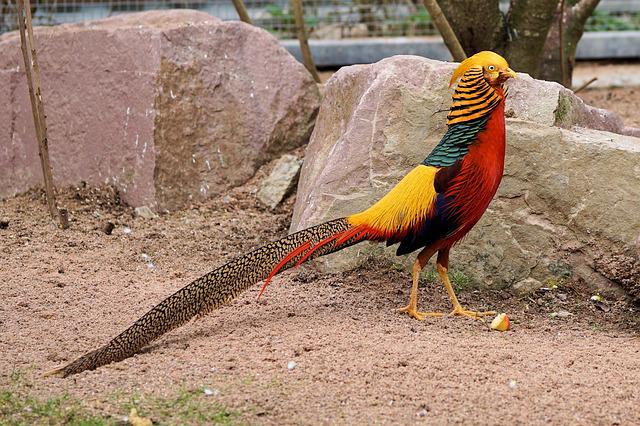 | Golden Pheasant |
 | Nicobar Pigeon |
 | Western-Crowned Pigeon |
 | Sulphur-Crested Cockatoo |
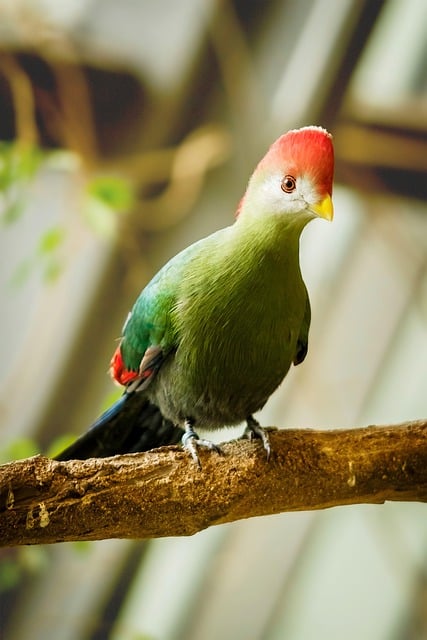 | Red-Crested Turaco |
 | Mandarin Duck |
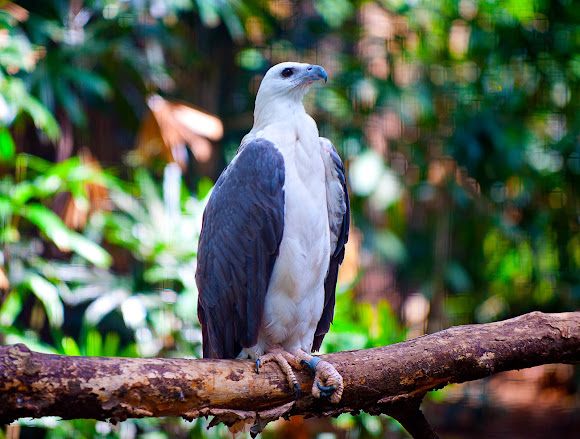 | Philippine Sea Eagle |
 | Victoria-Crowned Pigeon |
 | Royal Flycatcher |
 | Red-whiskered Bulbul |
 | Curl-Crested Aracari |
 | Eurasian Hoopoe |
 | Great-Crested Grebe |
 | Red-Legged Seriema |
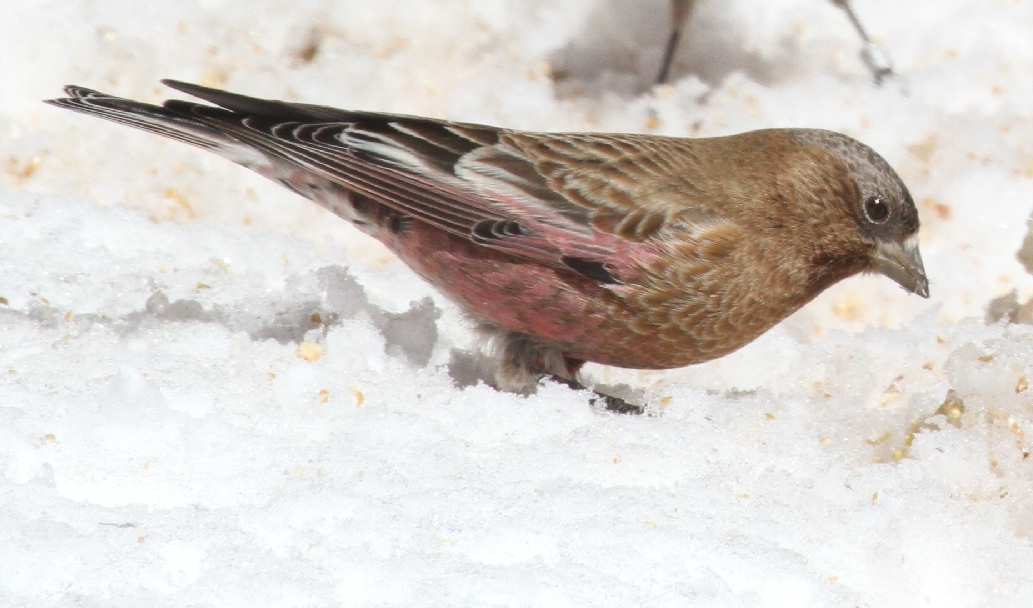 | Gray-Crowned |
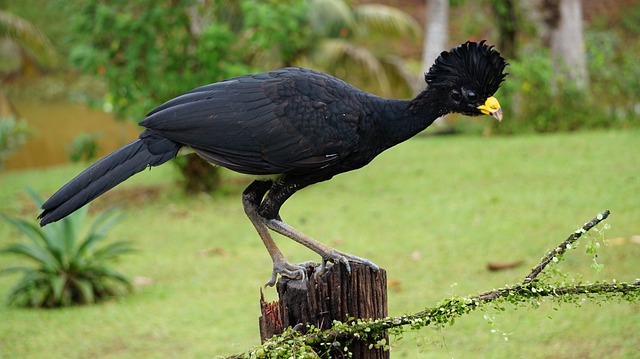 | Great Curassow |
 | Guiana Cockatoo |
 | Emu |
 | Crested Partridge/strong> |
 | Demoiselle Crane |
 | Great Blue Turaco |
 | Marabou Stork |
 | Smew |
 | Wood Duck |
Types of Birds with Hair on Top or Head
1. Polish Chicken

The Polish Chicken has a cool, 1980s-style haircut that makes her appear like Tina Turner when she was at the top of her game.
This bird’s feathers are so long and stunning that they often get in the way of its vision.
There are three distinct types of Polish chicken: bearded, non-bearded, and frizzle.
They may be different kinds of birds, but they all possess the same set of odd feathers atop their heads.
Due to their productive laying abilities, they are frequently kept as pets, and some people even breed them specifically for use as show chickens.
2. White-Crested Helmetshrike

The White-Crested Helmetshrike has two particularly notable characteristics.
The first is the brilliant yellow wattle over its eye, which makes it seem as if a little flower has been planted there.
The second is its remarkable crest, which extends from its crown to its beak.
The White-Crested Helmetshrike, a species endemic to Africa, is a social bird that forages for food in groups in wooded areas.
3. Tufted Puffin

The Tufted Puffin is an impressive seabird because of its white crest that is always neatly slicked back.
Its body is covered with black feathers, its eyes are white, and its beak is a brilliant orange.
The Tufted Puffin is a colonial bird that is found only in Alaska and the Pacific Northwest.
It is not uncommon for these flocks to number three million birds in certain coastal regions.
4. Silver Pheasant

The Silver Pheasant is a bird found in the forests of China and Southeast Asia; its white feathers extend from the back of its head to the tip of its tail.
This creates the illusion that its hair is long and flowing.
This bird gets its name from the silvery sheen of its feathers under bright light.
The remainder of the Silver Pheasant’s breast is coated with jet-black plumage and a scarlet-red spot around each eye.
5. Dalmatian Pelican

The Dalmatian Pelican is a big seabird that may reach a height of 6 feet and has a wingspan of 12 feet on average.
Only the orange tip of its beak and a faint yellow spot on its breast provide any contrast to the bird’s otherwise all-white plumage.
The Dalmatian Pelican is a species of pelican observed in freshwater environments throughout Eurasia.
Its diet consists mostly of fish, frogs, and other aquatic creatures.
6. Crested Duck

The Crested Duck’s hairstyle, a bouffant, is reminiscent of a wig from a bygone era.
This stunning waterbird, which may be found in its natural habitats in both the East Indies and Europe, is named the White-faced Stork.
However, not every Crested Duck exemplifies its illustrious moniker.
Some chicks are born with the crest, and others aren’t; this is due to a genetic mutation.
7. Golden Pheasant

The Golden Pheasant, found only in China, is among the world’s most spectacularly plumaged birds.
The vivid yellow of its crest contrasts with the orange and black of its wings and upper body.
While its bottom is coated with brilliant red feathers, its cape is tipped with a few vivid blue plumes.
Though they’re brightly colored, these elusive creatures are most at home in a forest with a variety of tree species.
8. Nicobar Pigeon

The Indian islands are home to the exotic-looking pigeon, which is mainly associated with the extinct dodo.
The Nicobar Pigeon has long, vivid plumage that ranges in hue from light blue to deep blue and even neon green.
A long greyish bib and crest are also featured on it.
9. Western-Crowned Pigeon

The Western-Crowned Pigeon, one of the biggest pigeon species, has a distinctive crest on its head that resembles a leaf.
It’s not green like leaves but rather a very light gray.
The Western-Crowned Pigeon’s shoulders are marked with white, while the rest of its plumage is a dark grayish.
Due to declining habitat and the human desire for its stunning feathers, the Western-Crowned Pigeon is now listed as a species in danger.
10. Sulphur-Crested Cockatoo

To identify a Sulphur-Crested Cockatoo, look at its distinctive light yellow mohawk.
The remainder of its body is covered in snow-white plumage, and it has a crown of bright yellow feathers.
The Sulphur-Crested Cockatoo is a highly clever bird found in New Guinea and Australia.
In spite of its widespread acceptance as a household pet, this species is often seen as a nuisance in its native range because of the damage it can do to wood structures and agricultural crops.
11. Red-Crested Turaco

Throw off that old adage that says “red and green should never be seen” because the Red-Crested Turaco is on hand to show that it’s not true!
All over its body, this small bird is covered in bright green feathers, and its crest is brilliant crimson with white tips.
Its crest is around two inches in height, which is rather enormous for such a little animal.
The Red-Crested Turaco is found only in Africa, where it often congregates with other birds in large groups ranging from five to 30.
12. Mandarin Duck

Amazingly, the Mandarin Duck’s appearance changes dramatically with the seasons.
Blue, red, green, and orange plumage are only some of the many colors it displays throughout the summer and spring.
Following the conclusion of the mating season, these hues gradually dull to brown.
In the colder months, it might be hard to identify males from females.
The Mandarin duck is originally from East Asia, but it has been imported to North America and Europe.
Dense forests in close proximity to shallow lakes are typical habitat wherever it is found.
13. Philippine Sea Eagle

The Philippine Eagle is among the world’s biggest eagles, with an approximate height of three feet.
Amazingly, it has a full beard of spiky brown plumage that frames its whole face.
Unfortunately, this majestic bird of prey is only located on four islands in the Philippines, and its population is rapidly declining.
Lemurs, flying foxes, rats, monkeys, lizards, and snakes are among its favorite meals.
14. Victoria-Crowned Pigeon

The Victoria-Crowned Pigeon, with its fancy crown of plumage, just had to make the cut.
Its purple and blue plumage covers the remainder of its body, and its legs are speckled with purple.
This pigeon, which dwells in New Guinea’s forests and feasts on nuts, seeds, insects, and fruit, was named after Queen Victoria.
15. Royal Flycatcher

The Royal Flycatcher, in keeping with its regal name, is mostly coated in brown plumage.
Why, then, you may wonder, is it on our list of birds with amazing feathers? This little bird certainly has something to hide!
In order to impress potential mates, male Royal Flycatchers display a spectacular crest that fans out horizontally over their heads.
This crest, which is brilliant crimson and topped with black, is used to woo a potential partner.
16. Red-whiskered Bulbul

The Red-Whiskered Bulbul, originally from India but now widespread in the United States, escaped from a Miami aviary.
The Red-Whiskered Bulbul is a black and white bird with a towering, spiky black mohawk that gives it its common name from the red spots on each side of its face.
Flocks of these birds live and migrate together, foraging for food and insects.
17. Curl-Crested Aracari

A member of the toucan genus, the Curl-Crested Aracari, seems to be a spectacular-looking bird.
Its wings are blue-gray, its chest is light yellow, its back is red, and its crown is adorned with tiny, prickly black and white plumage.
Additionally, like with other toucans, its beak is disproportionately large to the remainder of its body.
The Amazonian Curl-Crested Aracari mostly subsists on fruit; however, it has been seen stealing the eggs and chicks of other birds to eat.
18. Eurasian Hoopoe

The towering, orange crest of the Eurasian Hoopoe, which is found in Europe, North Africa, and Asia, is its primary distinguishing characteristic.
It features a light orange head, white and black wings, and pale gray underparts.
To find insects to eat, the Eurasian Hoopoe has developed very powerful muscles that enable it to bury its beak and then open it.
19. Great-Crested Grebe

Another avian species whose appearance changes with the seasons is the Great-Crested Grebe.
During the spring and early summer, the male has copper-orange markings that look great against the white and black stripes on his mane.
As soon as winter sets in, however, the color disappears, and they revert to being strictly white and black.
To aid in mating, this shift in coloration is made.
The Great-Crested Grebe relies on a variety of other factors as well. It also puts on a show, bobbing up and down in the water and waving its head as part of the performance.
20. Red-Legged Seriema

The Red-Legged Seriema’s crest, unlike that of many other birds, is not located at the top of the bird’s head.
Meanwhile, the magnificent orange glow emanates from the tip of the bird’s beak.
These crest plumage are black at the tips, while the rest of the bird is coated in beautiful brown and white plumes.
Red-Legged Seriemas are unique in the fact that they are frequently maintained the role of guard animals.
Farmers in South Africa will import them to keep predators away from their chickens and other fowl by using their piercing cries and swift claws.
21. Gray-Crowned

The Gray-Crowned is among the taller birds we’ve included at an average of 3 feet.
Furthermore, its black, white, and red visage is framed by a crest of stiff plumage that resembles hair.
Long, light gray plumage that seems like hair cascades over the remainder of the Gray-Crowned Crane’s body.
22. Great Curassow

The Great Curassow, a bird native throughout Mexico and Central America, is easily identified by its striking black plumage and towering crest.
Only the bright, golden tip of its beak provides any noticeable color to this otherwise all-black bird.
The Great Curassow is a territorial bird that lives in colonies of up to ten individuals and isn’t afraid to use force to protect its home.
Reports have even surfaced of this bird attacking people when it feels threatened.
23. Guiana Cockatoo

This fascinating small bird lives in rocky parts of South America, where it feeds on insects and seeds.
From the shoulders down, the Guinanan Cock-of-the-Rock is pitch-black, while the remainder of its body is a vibrant orange.
It also has an enormous brilliant orange crest that nearly completely conceals its beak.
24. Emu

The Emu, which originated in Australia, is a huge bird.
Despite its small stature, it is capable of astonishingly fast running speeds of approximately 50 kilometers per hour!
The large legs, shaggy black feathers, and black tuft atop an Emu’s head make it almost impossible to miss one in the wild.
The beak is broad and blue and black, and the eyes are a vivid orange.
25. Crested Partridge

The Crested Partridge is among the world’s most fascinating birds due to a few unique characteristics.
In the first place, its head is crowned with a towering, brilliant red crest.
The remainder of its body is adorned in dark blue plumage, so the bright orange stands in striking contrast.
A second distinctive trait is the naked red spots that surround each of their eyes.
The Crested Partridge is endemic to Southeast and South Asia, where it may be seen foraging for insects in leaf litter.
26. Demoiselle Crane

The long, white feathers that begin at the eye and cascade across the neck of the Demoiselle Crane make it immediately distinguishable as being one of the tiniest kinds of Crane in the world.
The remainder of its feathers is a variable shade of gray, ranging from light to dark.
The male Demoiselle Crane performs a dance ritual to entice a partner after the bird has migrated across the Himalayas (the world’s tallest mountain range) to reach its breeding grounds.
27. Great Blue Turaco

The Great Blue Turaco is the biggest of the Turaco species and may be found throughout Africa and the Congo.
Its typical height is 30 inches, and its plumage is a blue-gray color.
There is a prominent black crest on its head, and its beak is brilliant yellow with an orange tip.
28. Marabou Stork

Even while the Marabou Stork probably won’t win any beauty competitions, it’s still worth mentioning as an example of the incredible hair on certain birds.
Its neck and head are covered in a thick, frizzy halo of plumage that resembles hair, and its face is completely bare.
The Marabou Stork is not only the biggest but also the toughest of the stork species.
They have earned the moniker “The Undertaker” due to their penchant for feasting on dead animals and their willingness to steal Flamingo babies from their nests.
29. Smew
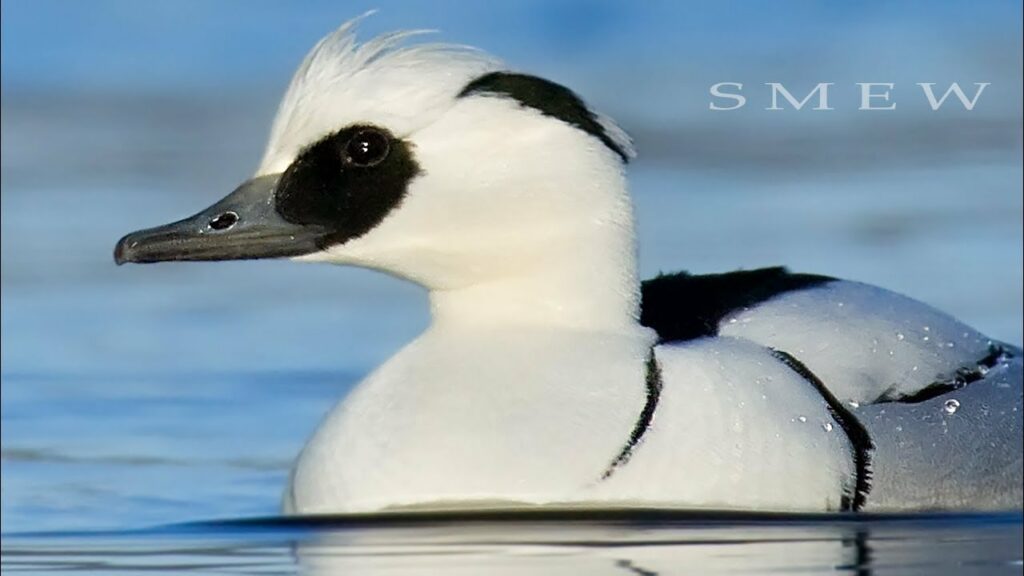
The Smew is a beautiful bird with white feathers that are divided by black stripes.
In addition, they have a glossy white crest that is bordered by black.
The Smew, a waterbird endemic to Europe, consumes only crabs, frogs, fish, and other aquatic organisms.
30. Wood Duck

We wrap off by featuring one of the most vibrant waterbirds in the world.
The male Wood Duck’s head is crowned with a bright green crest that is framed by white markings and falls rearward in a slicked-back fashion.
It has a brown chest with white spots and black wings.
The underside is gray.
Conclusion
In conclusion, the world of birds never ceases to amaze us with its diverse array of unique and fascinating features.
The tuft of hair on the head or the top of a bird is just one example of the extraordinary traits that these creatures possess.
From the majestic Royal Flycatcher to the diminutive Red-Legged Seriema, we have explored 30 different types of birds with this unusual hairstyle.
We have seen how these birds use their distinctive appearance to attract mates, communicate with each other, and blend into their surroundings.
By studying these birds, we gain a deeper appreciation for the complexity and beauty of the natural world around us.
So next time you’re out birdwatching, keep an eye out for these special birds with hair on top of their heads – you never know what you might discover!
FAQ
Why do some birds have hair on top of their head?
The hair-like feathers on the head of a bird are called “crest” or “plumage”. They are used for various purposes such as attracting mates, displaying aggression, communicating with other birds, and even camouflage.
What is the purpose of a bird's crest?
The crest on a bird’s head serves many purposes. Some birds use it to attract mates, while others use it to communicate with other birds. Some species also use their crest to intimidate predators or to blend in with their surroundings.
How do birds with crests differ from other birds?
Birds with crests have a distinctive appearance that sets them apart from other birds. Their hair-like feathers on the head can vary in size, shape, and color. Some crests are straight and pointed, while others are rounded and fluffy. This unique feature helps these birds stand out and can make them easier to identify.
What are some examples of birds with crests?
There are many types of birds with crests, including the Crested Caracara, Northern Cardinal, Blue Jay, Great Blue Heron, Great Egret, and many species of parrots.
Do all birds with crests have the same behavior or habitat?
No, the behavior and habitat of birds with crests can vary greatly depending on the species. Some birds with crests are migratory, while others are resident birds. Some are solitary, while others form flocks. Additionally, their habitats can range from forests and wetlands to deserts and grasslands.
Are crests found only on the head of a bird?
No, crests can be found on different parts of a bird’s body, depending on the species. Some birds have crests on their head, while others have them on their back or tail.
Last Updated on March 22, 2023 by Lily Aldrin
